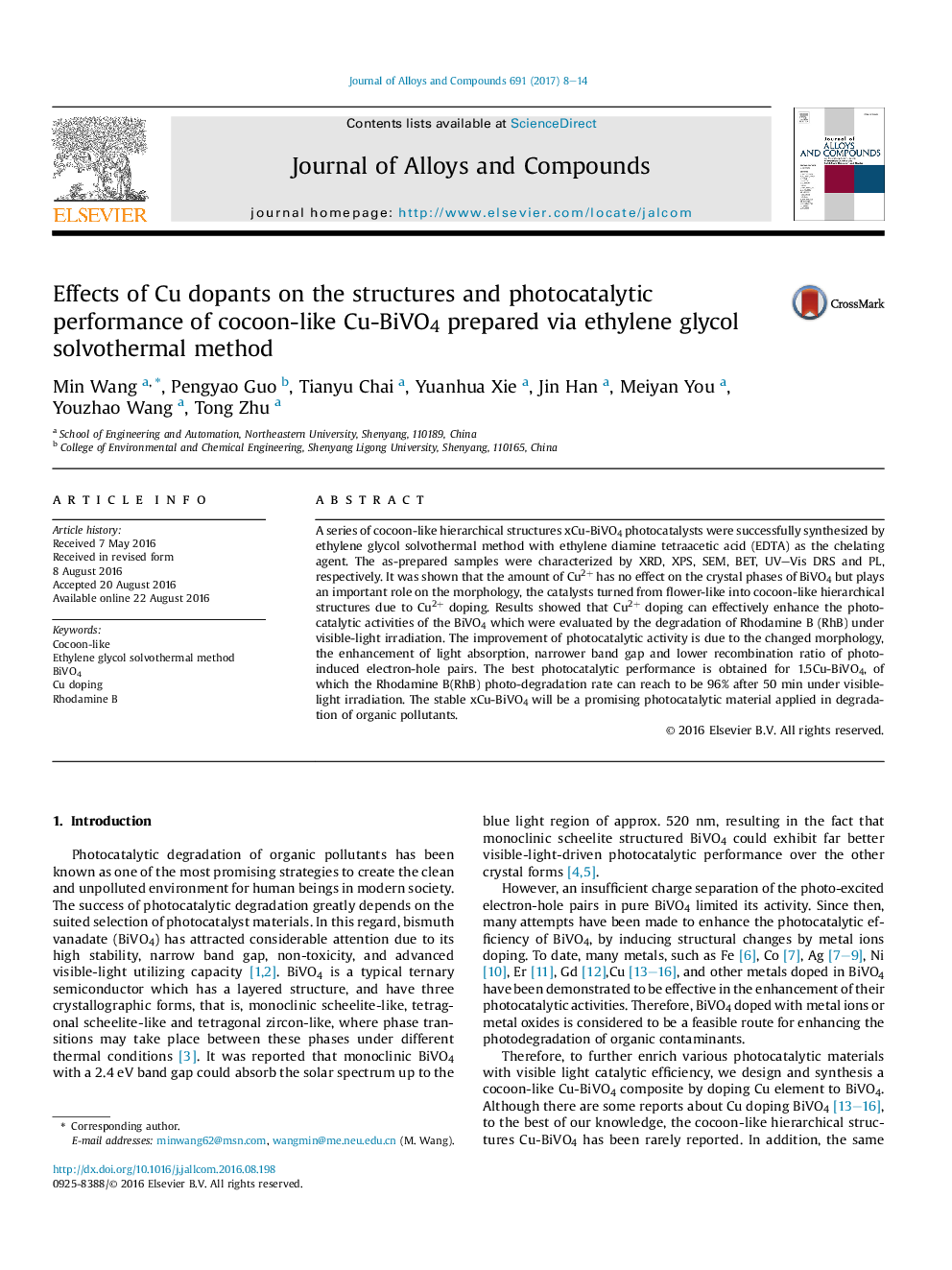| Article ID | Journal | Published Year | Pages | File Type |
|---|---|---|---|---|
| 1604858 | Journal of Alloys and Compounds | 2017 | 7 Pages |
•The cocoon-like Cu-BiVO4 was synthesized by ethylene glycol solvothermal method.•The maximum activity was observed when the molar ratio of Cu/Bi was 1.5%.•The higher activity due to morphology and lower recombination ratio of e+-h- pair.•The 1.5Cu-BiVO4 exhibited a high stability photocatalytic performance.
A series of cocoon-like hierarchical structures xCu-BiVO4 photocatalysts were successfully synthesized by ethylene glycol solvothermal method with ethylene diamine tetraacetic acid (EDTA) as the chelating agent. The as-prepared samples were characterized by XRD, XPS, SEM, BET, UV–Vis DRS and PL, respectively. It was shown that the amount of Cu2+ has no effect on the crystal phases of BiVO4 but plays an important role on the morphology, the catalysts turned from flower-like into cocoon-like hierarchical structures due to Cu2+ doping. Results showed that Cu2+ doping can effectively enhance the photocatalytic activities of the BiVO4 which were evaluated by the degradation of Rhodamine B (RhB) under visible-light irradiation. The improvement of photocatalytic activity is due to the changed morphology, the enhancement of light absorption, narrower band gap and lower recombination ratio of photo-induced electron-hole pairs. The best photocatalytic performance is obtained for 1.5Cu-BiVO4, of which the Rhodamine B(RhB) photo-degradation rate can reach to be 96% after 50 min under visible-light irradiation. The stable xCu-BiVO4 will be a promising photocatalytic material applied in degradation of organic pollutants.
